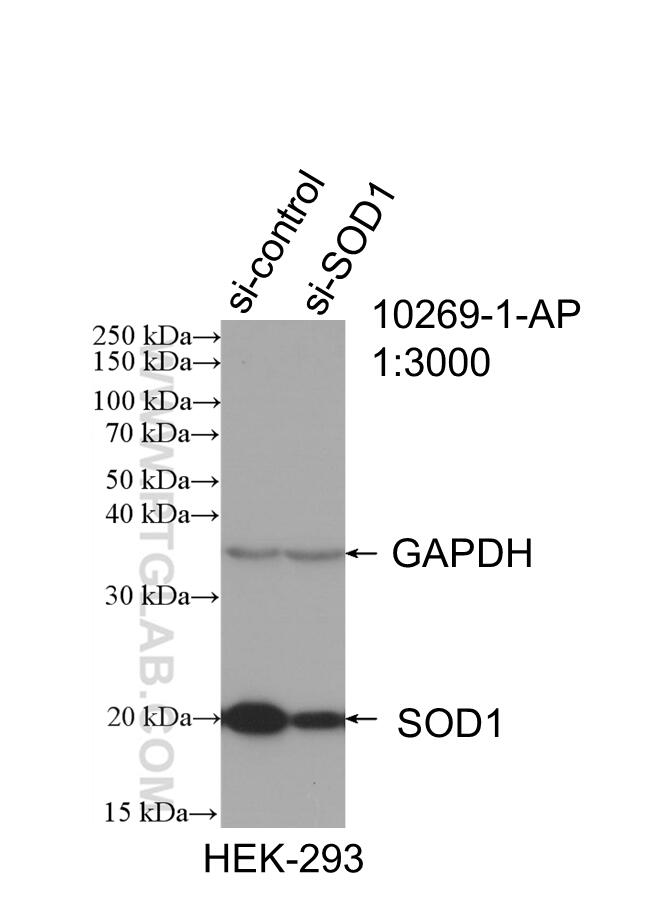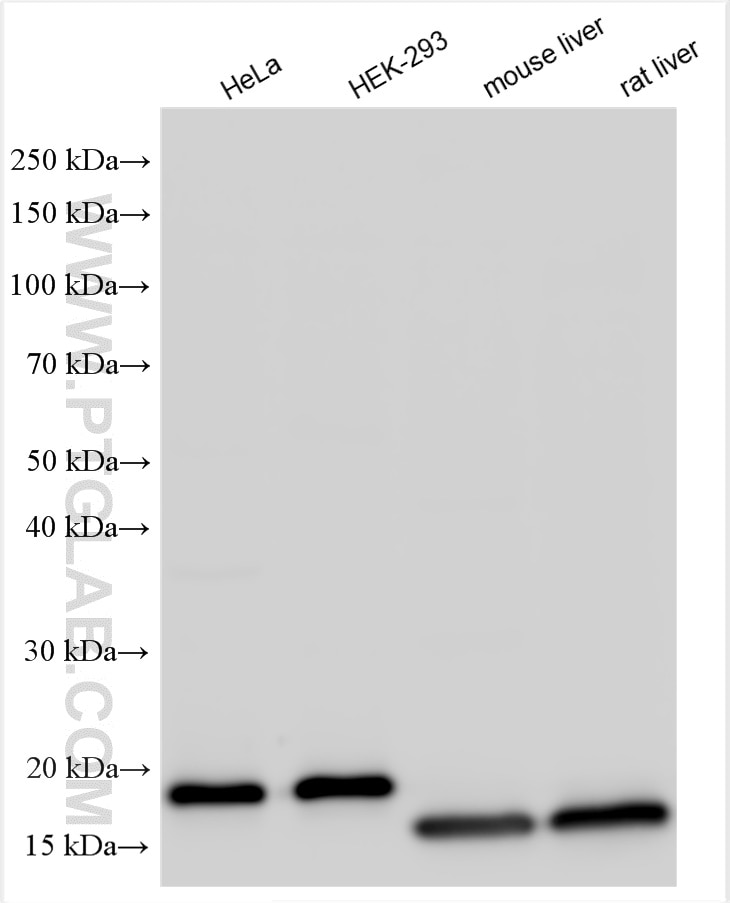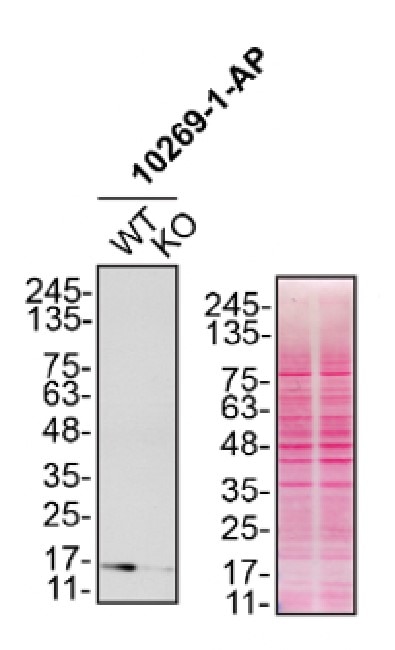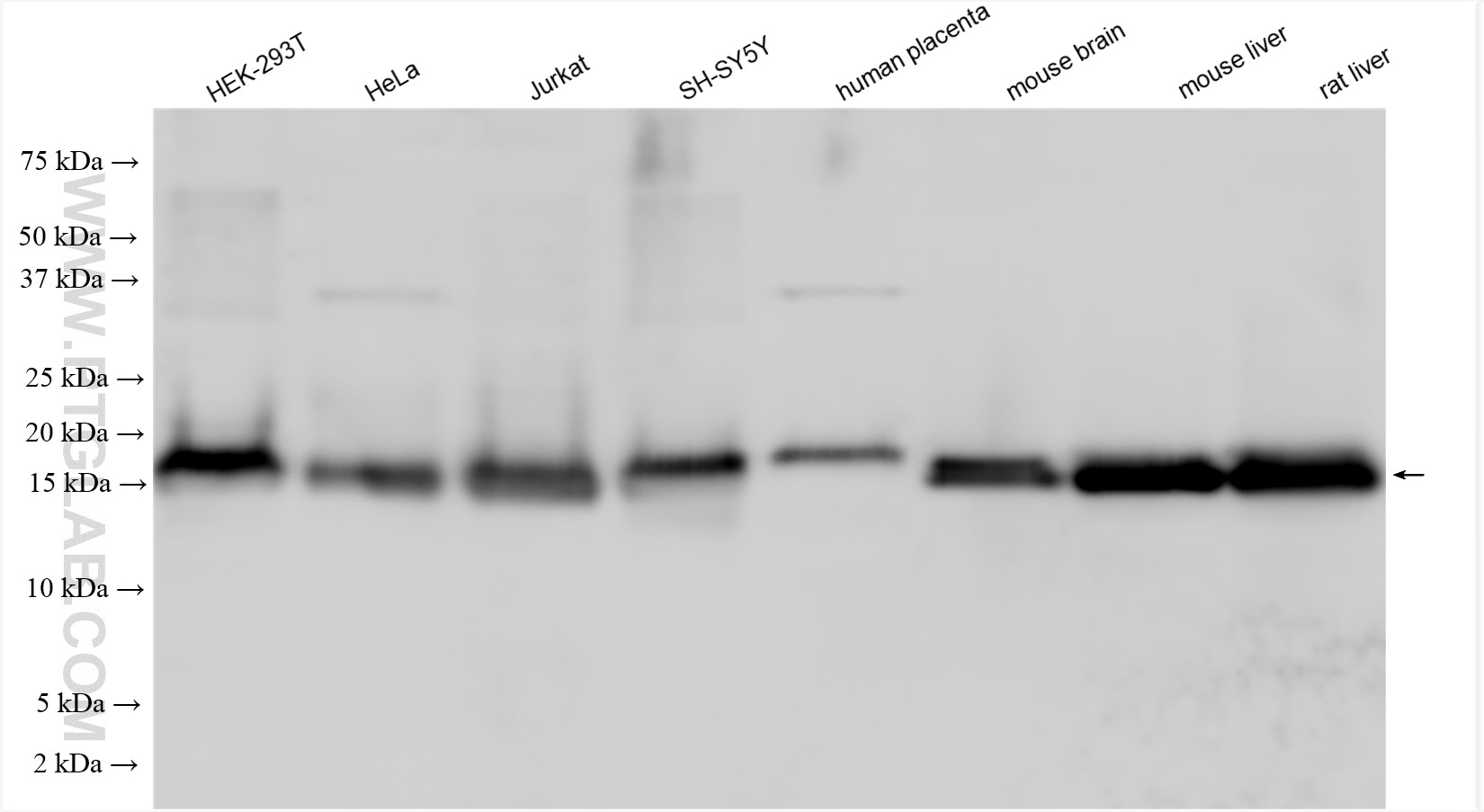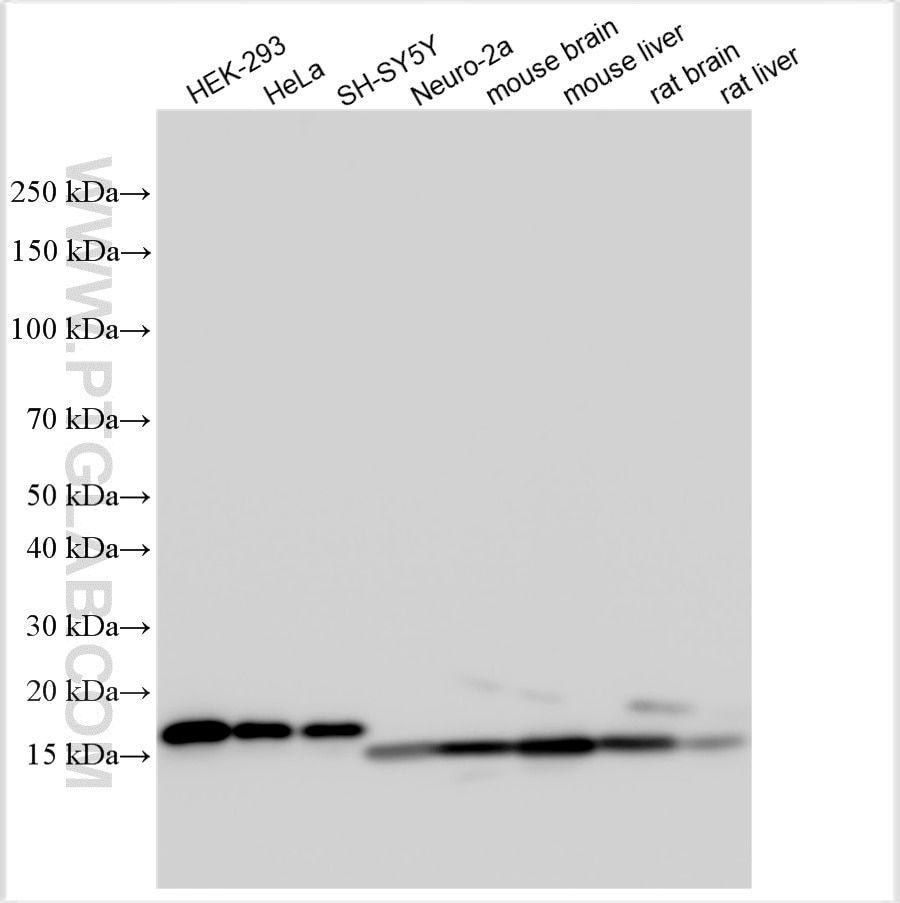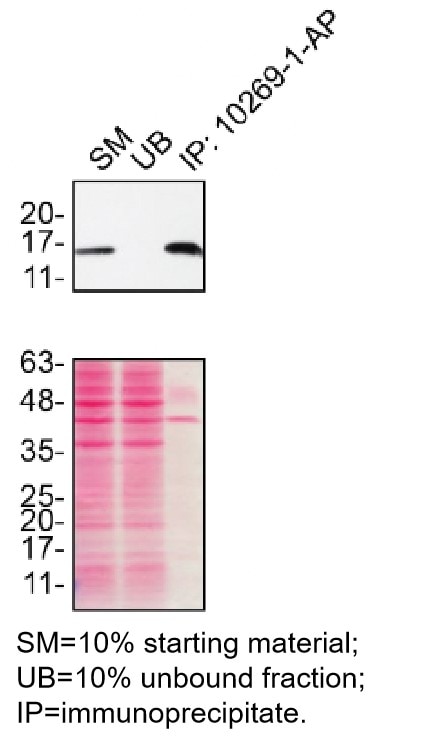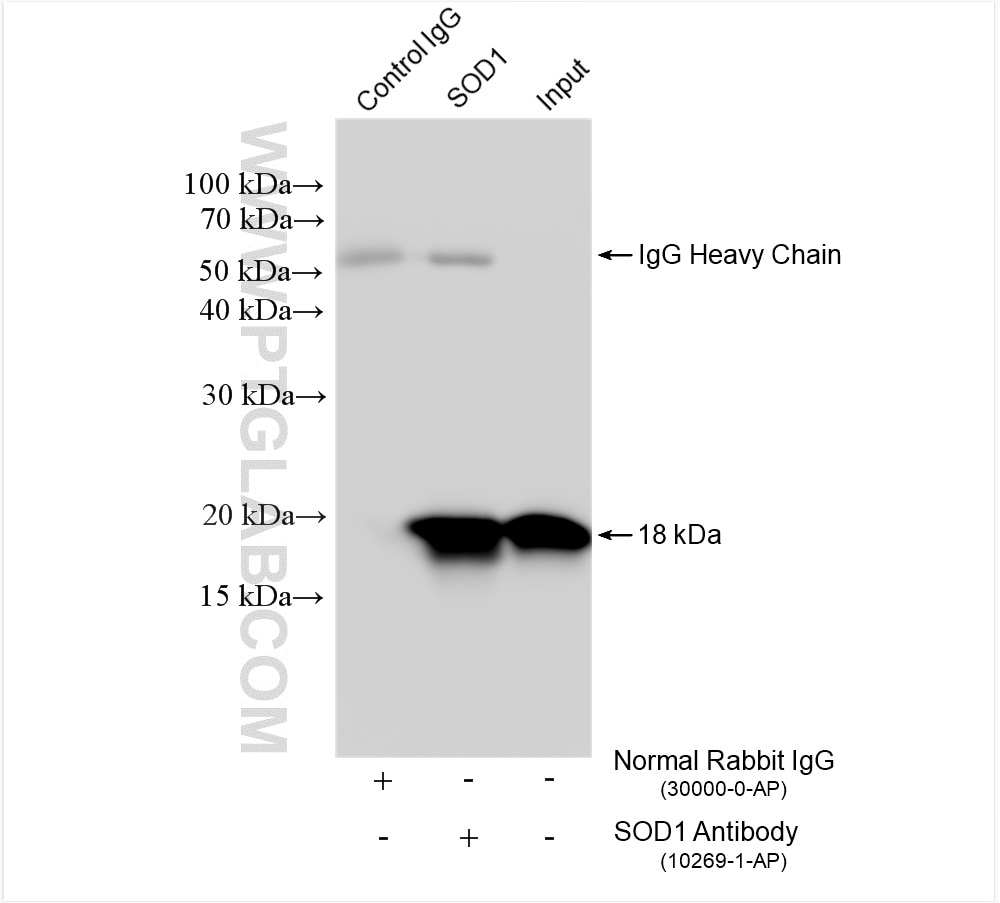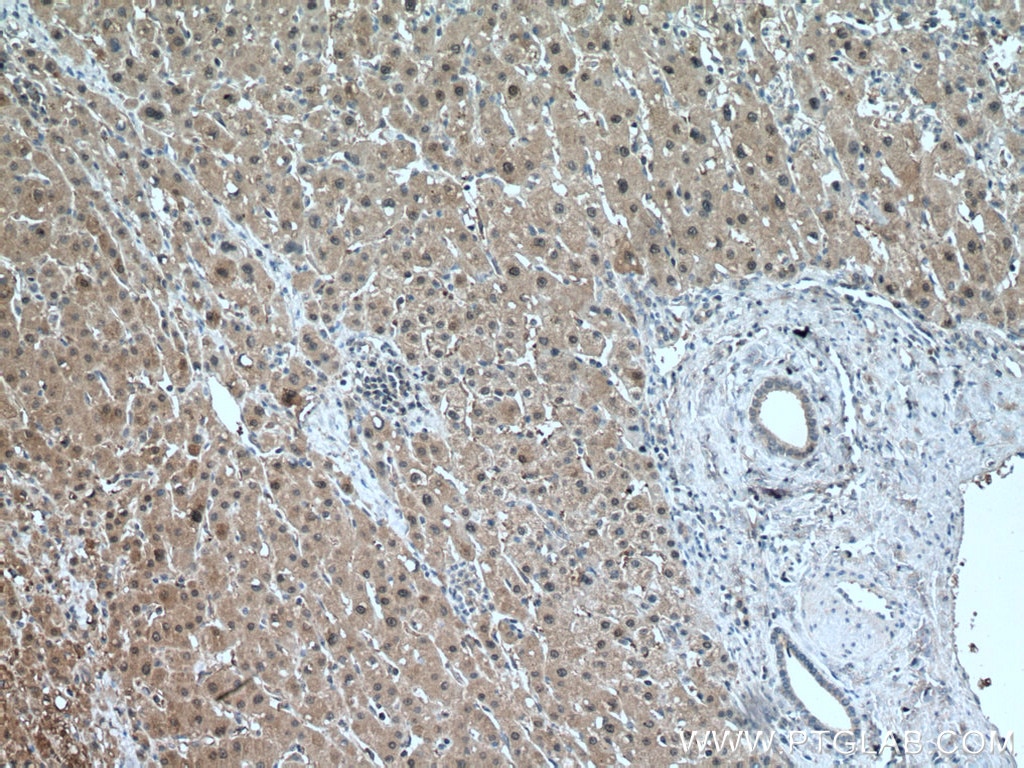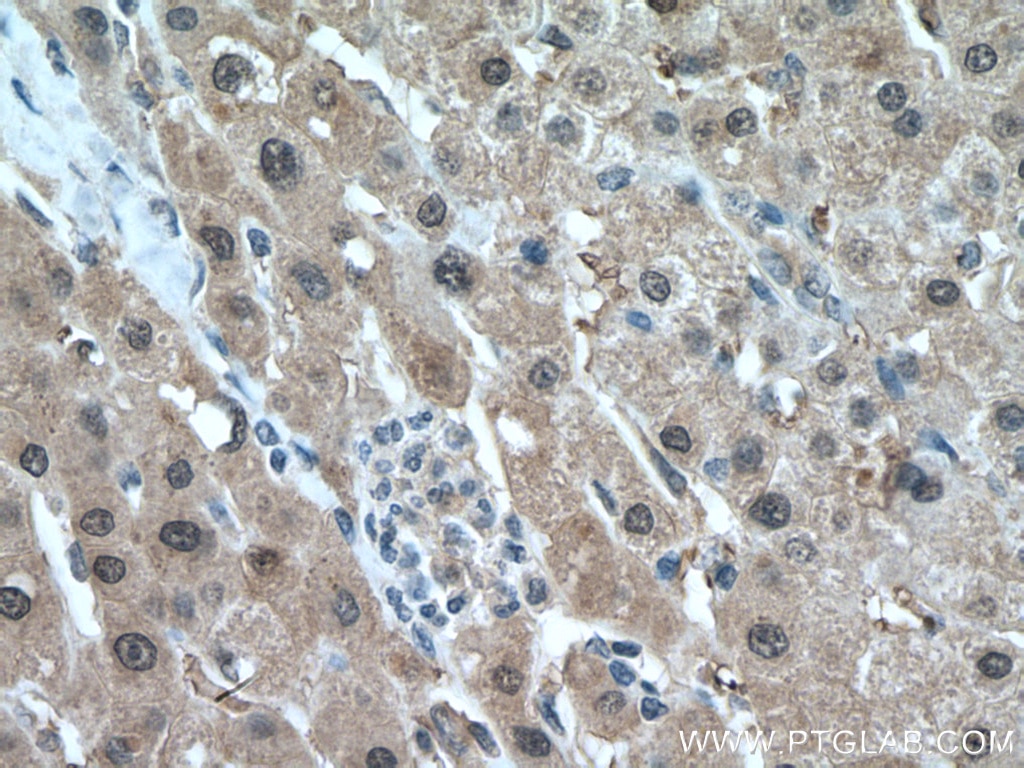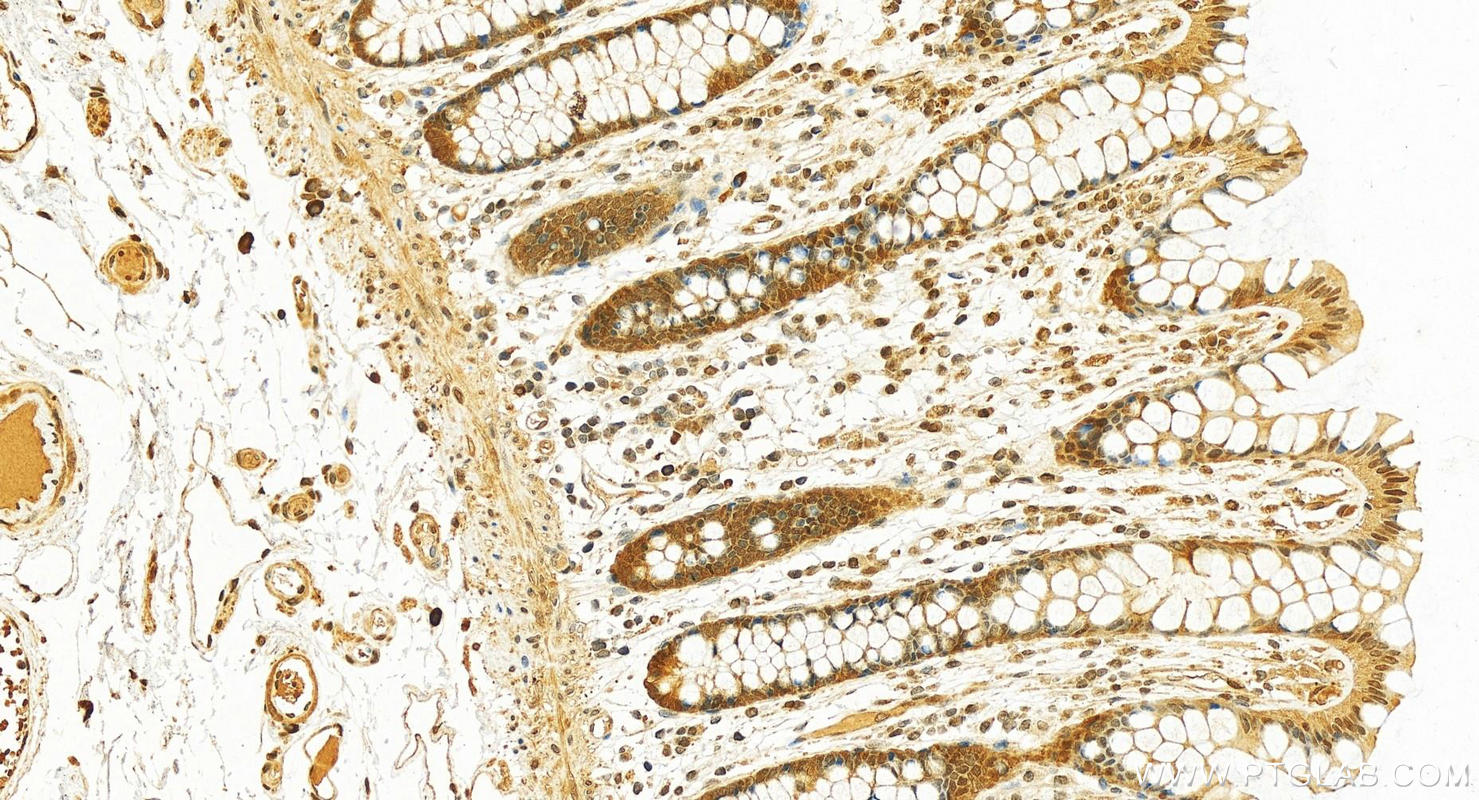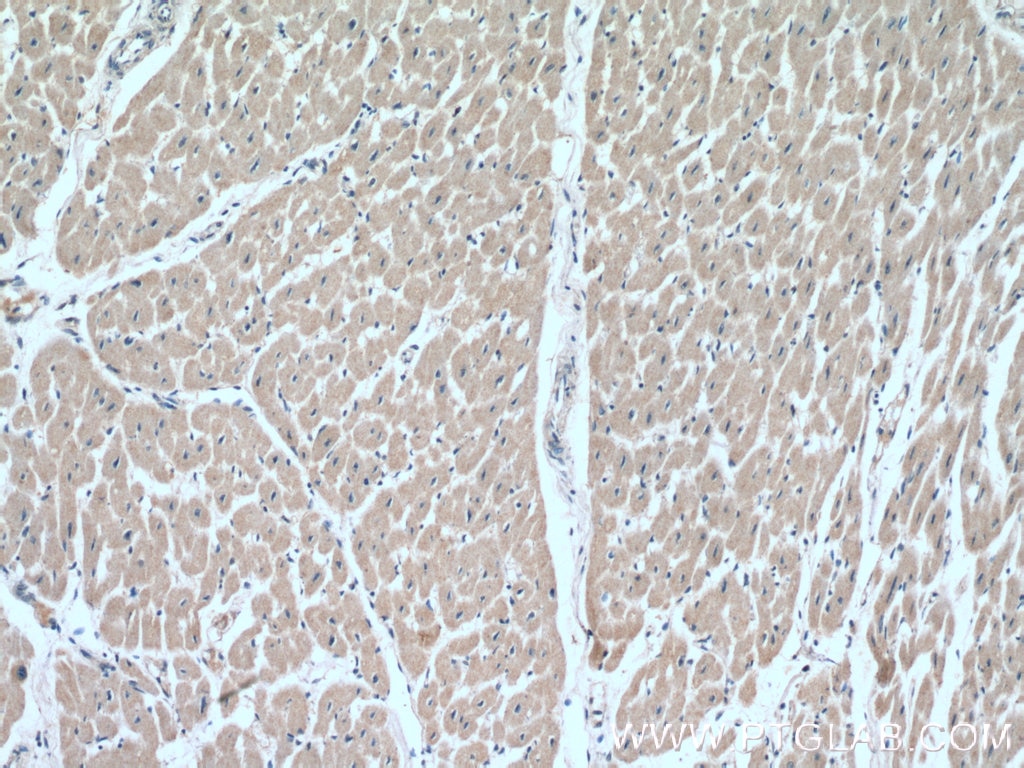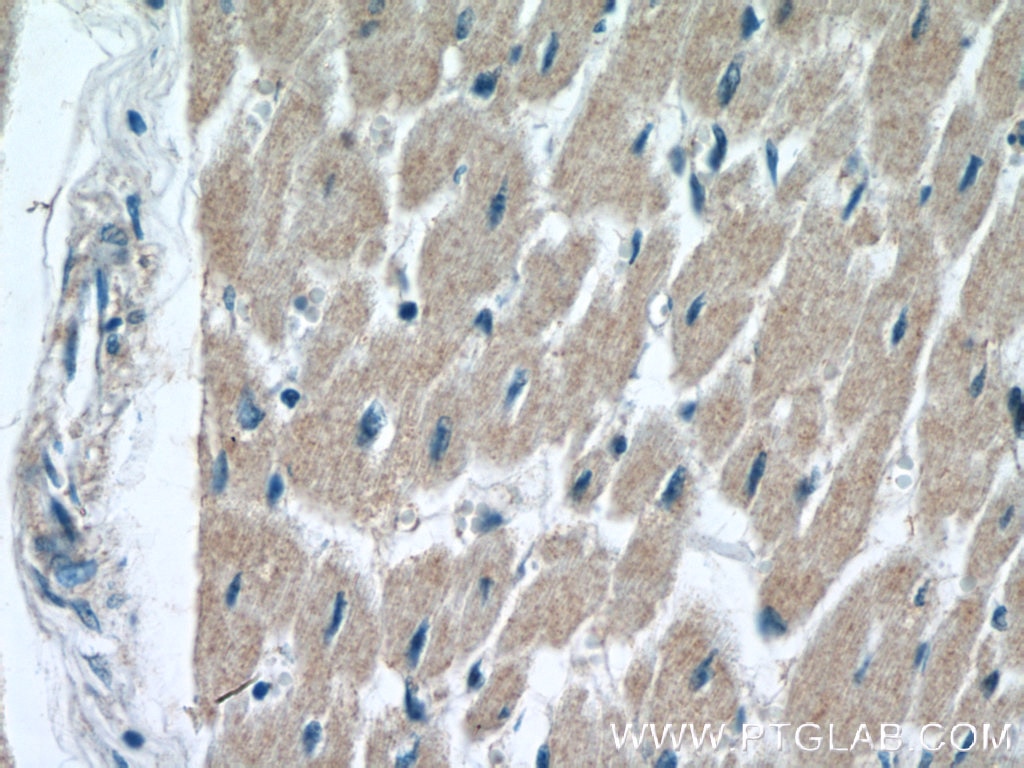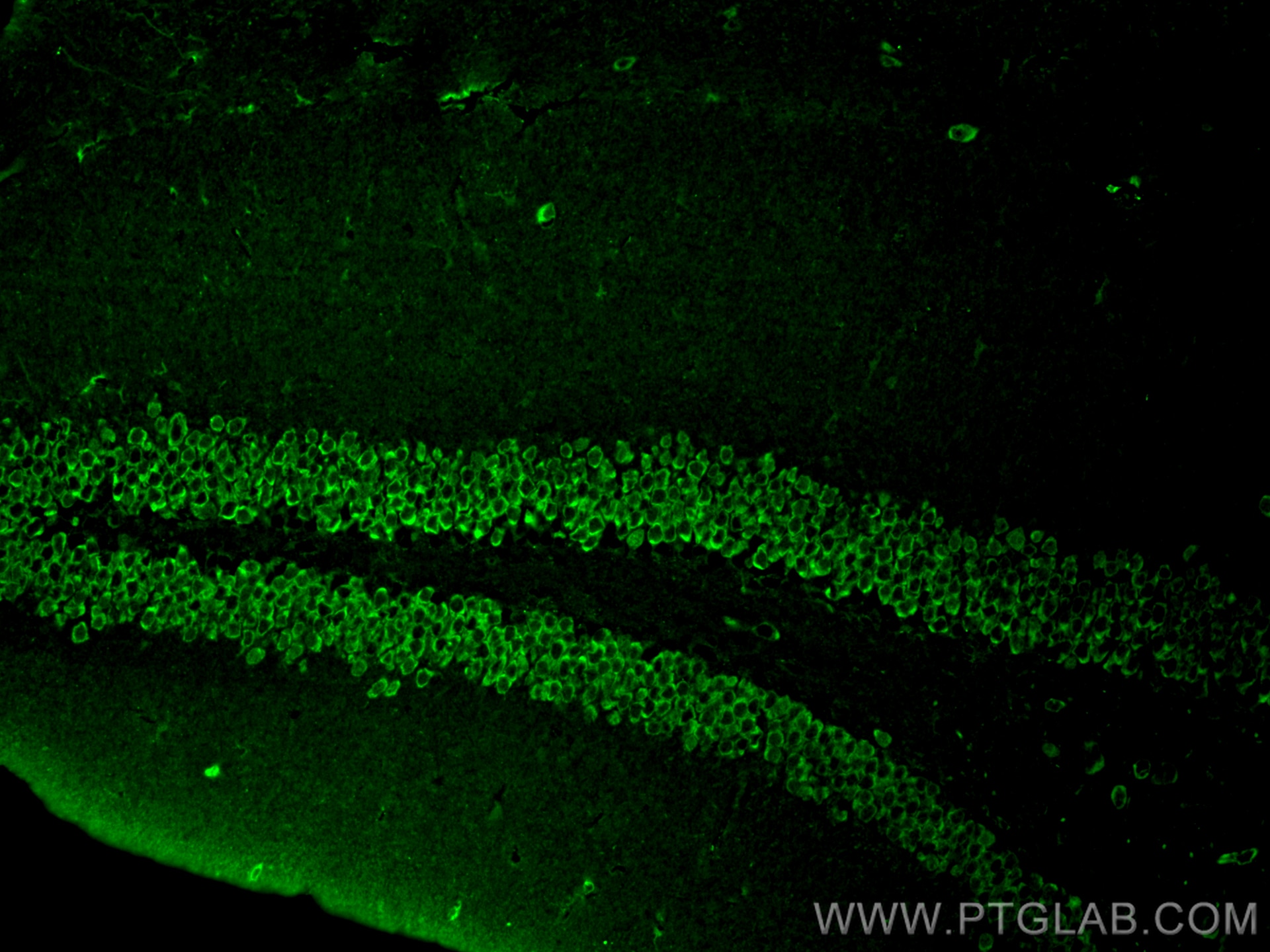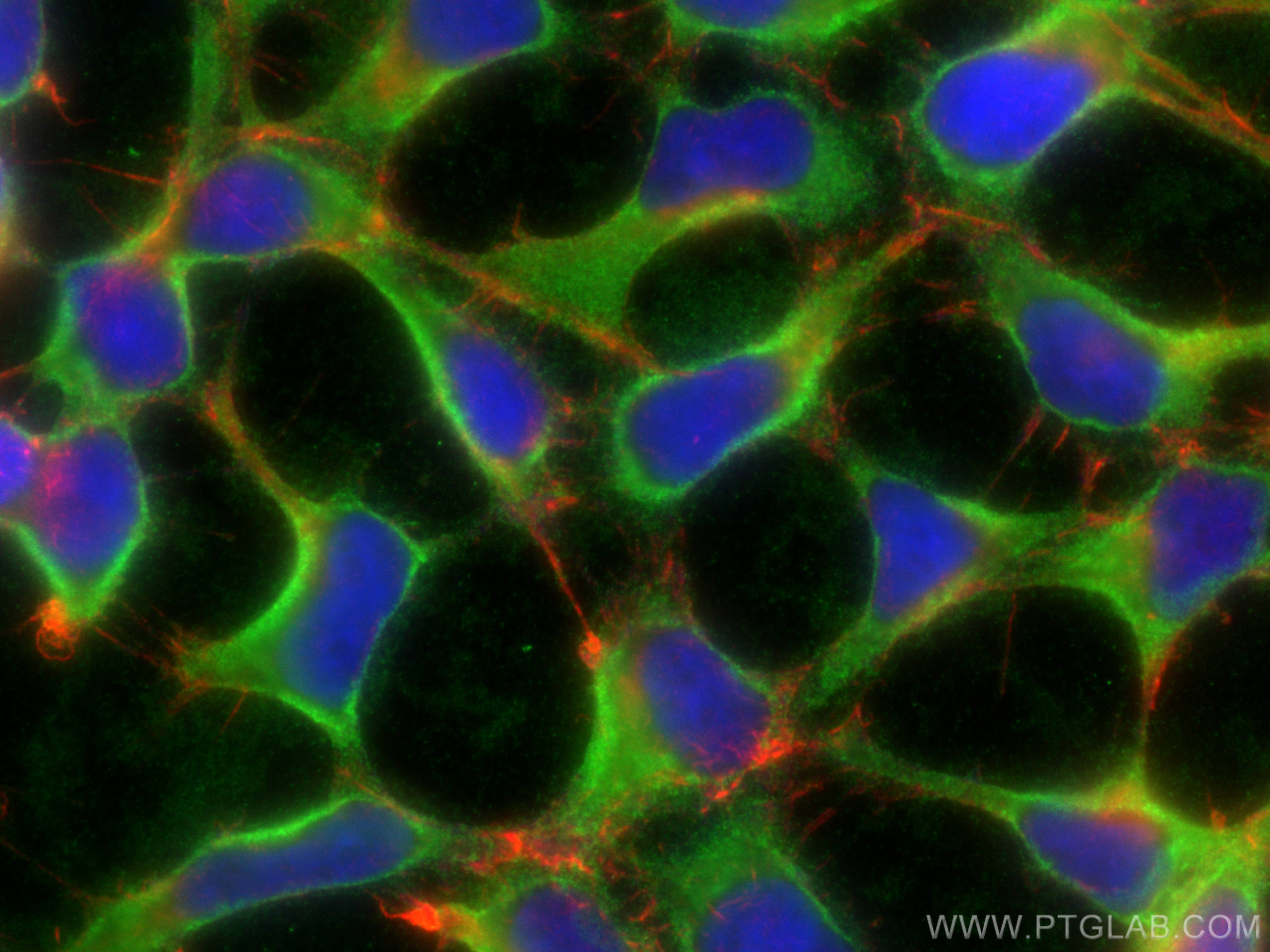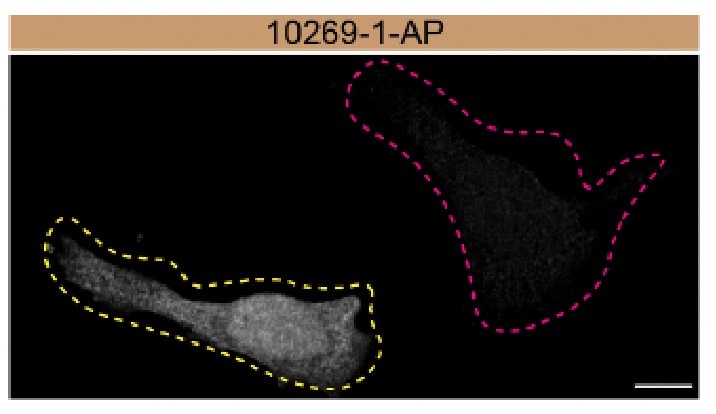Validation Data Gallery
Tested Applications
| Positive WB detected in | HEK-293 cells, HEK-293T cells, HeLa cells, SH-SY5Y cells, Neuro-2 cells, mouse brain tissue, mouse liver tissue, rat brain tissue, rat liver tissue, Jurkat cells, human placenta tissue |
| Positive IP detected in | HEK-293 cells, HeLa cells |
| Positive IHC detected in | human liver cancer tissue, human colon tissue, human heart tissue Note: suggested antigen retrieval with TE buffer pH 9.0; (*) Alternatively, antigen retrieval may be performed with citrate buffer pH 6.0 |
| Positive IF-P detected in | mouse brain tissue |
| Positive IF/ICC detected in | HEK-293 cells, HeLa cells |
Recommended dilution
| Application | Dilution |
|---|---|
| Western Blot (WB) | WB : 1:5000-1:50000 |
| Immunoprecipitation (IP) | IP : 0.5-4.0 ug for 1.0-3.0 mg of total protein lysate |
| Immunohistochemistry (IHC) | IHC : 1:300-1:1200 |
| Immunofluorescence (IF)-P | IF-P : 1:50-1:500 |
| Immunofluorescence (IF)/ICC | IF/ICC : 1:200-1:800 |
| It is recommended that this reagent should be titrated in each testing system to obtain optimal results. | |
| Sample-dependent, Check data in validation data gallery. | |
Published Applications
| KD/KO | See 1 publications below |
| WB | See 301 publications below |
| IHC | See 48 publications below |
| IF | See 19 publications below |
| IP | See 3 publications below |
| ELISA | See 1 publications below |
| CoIP | See 1 publications below |
Product Information
10269-1-AP targets SOD1 in WB, IHC, IF/ICC, IF-P, IP, CoIP, ELISA applications and shows reactivity with human, mouse, rat samples.
| Tested Reactivity | human, mouse, rat |
| Cited Reactivity | human, mouse, rat, pig, canine, chicken, bovine, goat |
| Host / Isotype | Rabbit / IgG |
| Class | Polyclonal |
| Type | Antibody |
| Immunogen |
CatNo: Ag0335 Product name: Recombinant human SOD1 protein Source: e coli.-derived, PGEX-4T Tag: GST Domain: 1-154 aa of BC001034 Sequence: MATKAVCVLKGDGPVQGIINFEQKESNGPVKVWGSIKGLTEGLHGFHVHEFGDNTAGCTSAGPHFNPLSRKHGGPKDEERHVGDLGNVTADKDGVADVSIEDSVISLSGDHCIIGRTLVVHEKADDLGKGGNEESTKTGNAGSRLACGVIGIAQ 相同性解析による交差性が予測される生物種 |
| Full Name | superoxide dismutase 1, soluble |
| Calculated molecular weight | 16 kDa |
| Observed molecular weight | 16-20 kDa |
| GenBank accession number | BC001034 |
| Gene Symbol | SOD1 |
| Gene ID (NCBI) | 6647 |
| RRID | AB_2193750 |
| Conjugate | Unconjugated |
| Form | |
| Form | Liquid |
| Purification Method | Antigen affinity purification |
| UNIPROT ID | P00441 |
| Storage Buffer | PBS with 0.02% sodium azide and 50% glycerol{{ptg:BufferTemp}}7.3 |
| Storage Conditions | Store at -20°C. Stable for one year after shipment. Aliquoting is unnecessary for -20oC storage. |
Background Information
The enzymatic function of Cu/Zn Superoxide Dismutase (SOD1), previously known as hemocuprein and IPOA, was first characterized in 1969 (PMID: 5389100). SOD1 is commonly known for its ROS scavenging activity, but recent work has uncovered additional roles in modulating metabolism, maintaining redox balance, and regulating transcription. In disease contexts, SOD1 is best-known for its role in a familial form of amyotrophic lateral sclerosis (fALS) (PMID: 10630188). In addition, SOD1 is overexpressed in numerous cancer types, including lung adenocarcinoma, non-small-cell lung cancer , and 70% of primary breast cancers (PMID: 31344643).
Protocols
| Product Specific Protocols | |
|---|---|
| IF protocol for SOD1 antibody 10269-1-AP | Download protocol |
| IHC protocol for SOD1 antibody 10269-1-AP | Download protocol |
| IP protocol for SOD1 antibody 10269-1-AP | Download protocol |
| WB protocol for SOD1 antibody 10269-1-AP | Download protocol |
| Standard Protocols | |
|---|---|
| Click here to view our Standard Protocols |
Publications
| Species | Application | Title |
|---|---|---|
Cell Stem Cell Artificial extracellular matrix scaffolds of mobile molecules enhance maturation of human stem cell-derived neurons | ||
Bioact Mater Dynamic degradation patterns of porous polycaprolactone/β-tricalcium phosphate composites orchestrate macrophage responses and immunoregulatory bone regeneration | ||
Bioact Mater A two-pronged approach to inhibit ferroptosis of MSCs caused by the iron overload in postmenopausal osteoporosis and promote osseointegration of titanium implant | ||
Nat Struct Mol Biol TDP-43 aggregation induced by oxidative stress causes global mitochondrial imbalance in ALS. | ||
Nat Commun Inflammation mobilizes copper metabolism to promote colon tumorigenesis via an IL-17-STEAP4-XIAP axis. |

